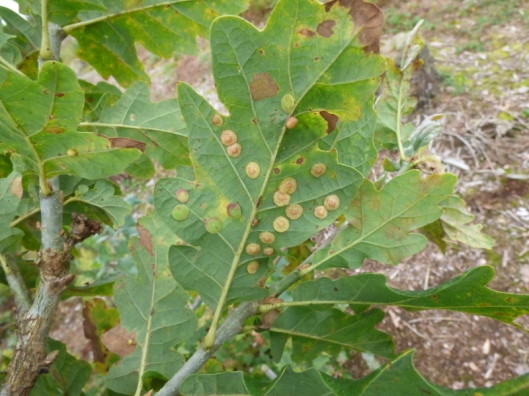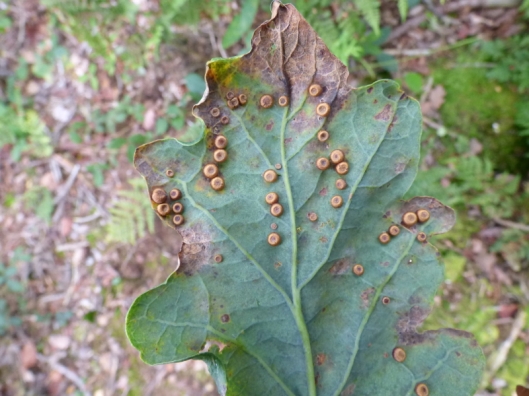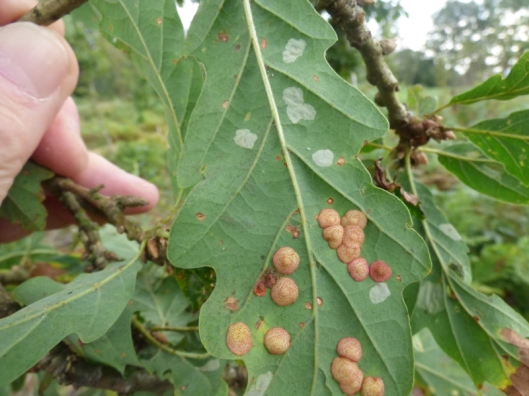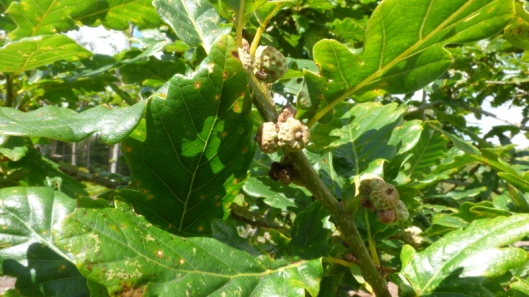Tags
Galls are really interesting….. yes they are. These ones are called ‘Spangle galls’ and are caused by a wasp called Neuroterus albipes
They are like a plant cancer, they are caused by an insect laying its egg or eggs inside part of a plant, often the leaf. Then the larva hatches out and lives inside the plant, protected by the plant. But its presence causes the cells of the plant to start multiplying and gradually a noticeable ‘bump’ appears, this of course provides more protection for the larvae living inside and also food, because the larvae are feeding on the plant cells. The larvae will produce chemicals like plant hormones which stimulate the plant cells to start multiplying faster than normal.
What is interesting and I think unexplained is that the ‘bump’ is not just any random shape, but develops into a recognizable shape and that different insects will cause different shapes to be formed. Sometimes the insect causing the gall produces quite small and easily overlooked formations and other insect species will produce much larger more noticeable structures. Look closely and you will see that the galls on this Oak leaf are different to the ones in the first photo. These are called Button galls and also caused by a wasp Neuroterus numismalis
Some plants seem more prone to galls than others. Oaks seem to be hosts to a vast number, but then again Oaks are the home to more species in general than any other tree. One gall that many people are familiar with is the so called pincushions which develop on Dog roses.
Many Oak galls fall off the leaves in the autumn and remain on the forest floor throughout the winter and during this time the larvae turns into a pupae and then in the spring it hatches out and a tiny fly or wasp will emerge from the gall. These adults do not normally live for very long, just long enough to meet a partner and then lay more eggs in next years leaves and so it goes on. in this photo you can see where some of the galls have already fallen off leaving a white scar.
Have a look now on the undersides of Oak leaves and you may well see all sorts of galls. Not just on the leaves, gall can be found on the buds and the seeds even on roots, but probably best not to go digging up the trees.

Pingback: Christmas list… for woodland owners. | Ninewells Wood/Catbrook Wood
Interesting article… And educational! Thank you!
Oh good….. I was in two minds about it.